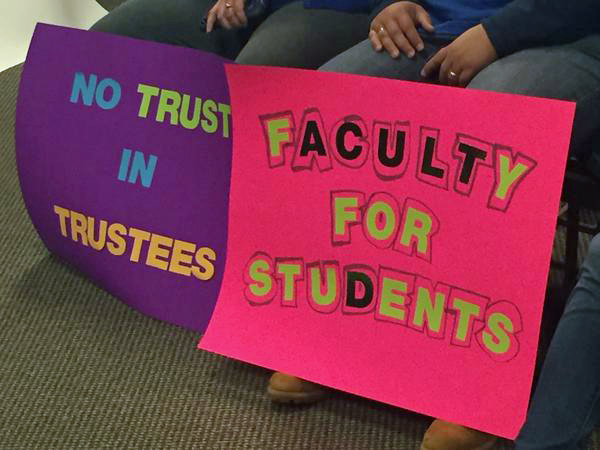
Excerpt from WYSO Radio
Wright State University is preparing for a planned faculty strike January 22. University administration officials say the school will remain open even if faculty head to the picket line.
News of the potential walkout is being met with confusion by some Wright State students returning to campus for the start of the new semester.
Wright State student body president Daniel Palmer is a senior — that means he’s already been through some of the most tumultuous times in the school’s history. He watched as the school’s financial crisis came to head, employees were laid off and plans for a 2016 presidential debate evaporated. Then last year, the faculty union began threatening to strike as contract negotiations dragged on without an agreement.
"I think we're kind of fatigued and almost numb to the idea but now it's getting real, where we may not have the people we paid for in our classrooms,” said Palmer.
Palmer says many students are confused about how the strike might affect them when they return from winter break.
"A lot of students don't know if they should show up to class,” said Palmer. “A lot of students don't know there's any class at all. And so you're really running into issues here where there's a lot of misinformation”
It’s a situation many other American college students have encountered in the past year. Nationally, 11 higher education strikes occurred last year – more than double the number in 2017.
That’s according to William Herbert, with the National Center for the Study of Collective Bargaining in Higher Education at New York’s Hunter College.
"Not only has there been an increase in strike activity,” said Herbert. “There's also been an increase in unionization by faculty in both the public and private sectors.”
Herbert says much of the increase in union organizing can be linked to wage stagnation after the budget cuts of the Great Recession, and growth in non-tenure track adjunct positions. Wright State’s faculty union includes both tenure track and non-tenure track members. High-profile teacher strikes in West Virginia and Oklahoma last year may have also contributed to the trend, he says.
"In none of those states those teachers have a right to collectively bargain,” said Herbert. “And yet they felt the necessity to go out on strike in order to get a pay raise. And that sort of sends a message, I think. What is transpiring is the pushing of people to the limit of necessitating either strike threats or actual strikes to improve their salary and benefits.”
Professor Noeleen McIlvenna, with Wright State’s faculty union, says union members were inspired by other strikes they saw at public school districts around the country last year.
"What's happening with us is not separate from what's happening to the K-12 teachers across the country because you know what's happened to them from their state and from their administrations is similar what's happened to us,” said McIlvenna. “We're all finding ourselves being put into these impossible boxes where you cannot offer the level of education you want to offer.”
McIlvenna says the union is communicating with students via social media about what to do if strike plans move forward. She also says faculty members will be able to make up for lost instructional time if the potential strike ends quickly. The majority of higher education strikes over the past five years were resolved within a week.
Wright State University classes begin January 14. University officials stress the school will remain open during the scheduled walkout. A spokesperson says contingency plans include using substitutes to fill in for picketing professors and temporarily combining classes. Wright State students have also been advised to check their campus email addresses for information about any specific changes to class schedules.

